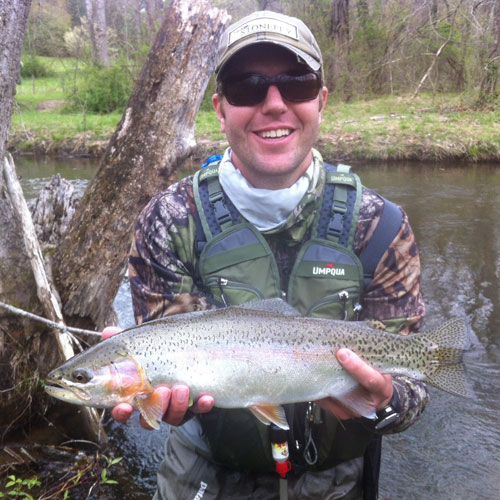The difference between a good day and a bad day fly fishing can be determined by an anglers’ willingness to adjust and change with the current situation at hand. It’s pretty simple to know when to change. You change when you’re not catching fish! To do the same thing over and over, expecting a different result is considered insanity. So if you’re not catching fish you need to consider changing what you’re fishing, how you’re fishing it, and where you’re fishing. The anglers that can make that decision the quickest are, more times than, not going to catch more fish.
So, you’ve determined that it’s time for a change in what you’re fishing. This decision needs to be based on the current conditions, i.e. water clarity, water level, bug activity, and light conditions. These need to be simple, “yes or no,” questions. For example is the water high? Is the water clear? Are bugs flying around? Is it sunny or cloudy? Are your flies too heavy? Are your flies too light? The answers to these questions need to help determine what you are going to change to. Another example would be, the water is muddy, so I’m going to fish a fly that contrasts that muddy water, something that the fish can see in the mud.
Now, through decision-making, you’ve decided that it’s time to change how you’re fishing. It’s the kind of scenario that you’ve caught a couple of fish so you know your flies are working, but you feel like you can still increase your catch rate. This is when it’s time to change your tactics, or presentation, instead of your flies. For example instead of just dead drifting the whole time, on your next cast, lift your flies during your drift. Next cast, jig your flies through your drift. Next cast, swing your flies during your drift. Once you’ve been rewarded with a fish, key in on that presentation and keep using it.
Once you’ve dialed in your flies and you’ve keyed in on which presentation and tactics are producing, it’s time to move. This is when you can simply reposition. Take a step up river. Take a step down river. Take a step out. Grid off your water and cover it thoroughly. Then repeat. Be conscious of what type of water is producing fish. Are fish holding deep or up in the water column? Are the fish holding in pocket water or more in the deeper pools? Again, these are simple, ”yes or no,” questions. Once you’ve determined which water-type the fish are holding in, try to target that water type.
Theses simple tips will help you put more fish in the net.
If you have any questions or would like to learn more about this feel free to contact me at info@granddaddyflyfishing.com.
